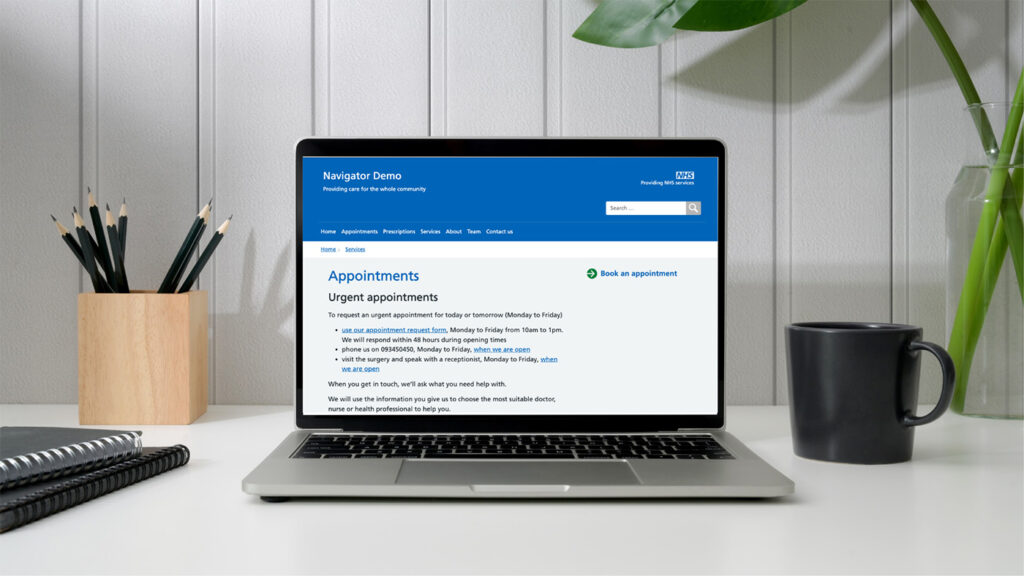Lessons to help you get it right
It’s crucial to get the appointments page right on your GP practice website. Most patients go straight to this page to get help, even if the care they end up receiving isn’t a traditional face-to-face consultation with a GP.
Tim Green* explains how to set up your appointments page for successful patient journeys.
Keep it simple
Your appointments page needs to be easy to navigate and easy to read for your patients.
With over 7 million adults in the UK reading at (or below) the level of a 9 year old, it’s essential to write clean cut copy. Aim for a reading age of 9-10, and check your page using the Hemingway Editor. This free tool makes it easy to write simple and usable copy, and gives specific suggestions and corrections to help you get it right.
Go to the Hemingway Editor: https://hemingwayapp.com/
Use a clear structure
Another way to help your patients to use your appointments page is to divide it up into clear sections.
Use headings for Urgent and Routine appointments to ensure you’re in line with the NHS benchmarking and improvement tool.
Ensure you also cover:
- Cancelling or changing an appointment
- Extended access options
- Out of hours options
- Accessibility offerings
- Home visits
Keep the content within your sections short, with no large paragraphs over 60 words in length.
Cut out clutter
It can be tempting to copy and paste paragraphs from your online consultation service provider explaining how their service works, but stop and think before you do.
All your patients need to know is which service will help them get the care they need, and a link, phone number or form to fill in. They don’t need an in-depth overview of a product.
Also avoid adding banners or graphics for your triage system. Prioritise simple calls to action (book an appointment, order a prescription etc) and links to relevant services.
Don’t do it alone
It might seem overwhelming to have to restructure your appointments page, but you don’t have to start from scratch.
As part of the NHS guidance on creating a highly usable and accessible GP website for patients, the NHS team have put together fantastic templates to help you support your patients.
Go to the free template for your appointments page
Get your website supplier to help you
Your GP practice website supplier should be on hand to direct you to useful resources to help you populate your practice website.
A good supplier will often have an in-house copy expert who can provide template text for your new website.
GPsurgery.net has a content library with copy for all the key pages on your GP website – and it’s free to access for anyone with an NHS email address.
Go to the GPsurgery.net content library
But I’m too busy to be writing copy!
Everyone in general practice is hectic at the best of times, so it’s understandable if you don’t have the time to construct and populate a compliant and easy to use website yourself.
At GPsurgery.net, we recently launched Navigator, our website product for the busiest of practices. With Navigator, all you have to do is submit one form with your details and we’ll build you a website that’s easy to use and gets you a great score with the NHS benchmarking and improvement tool.
This includes a stellar appointments page, prioritised to guide patients to the pathways you’d like them to use.
With these tips, you should be able to get your appointments page up to scratch in no time at all.
*Tim Green is the co-founder of GPsurgery.net, provider of compliant, easy-to-use websites for NHS GP practices.
